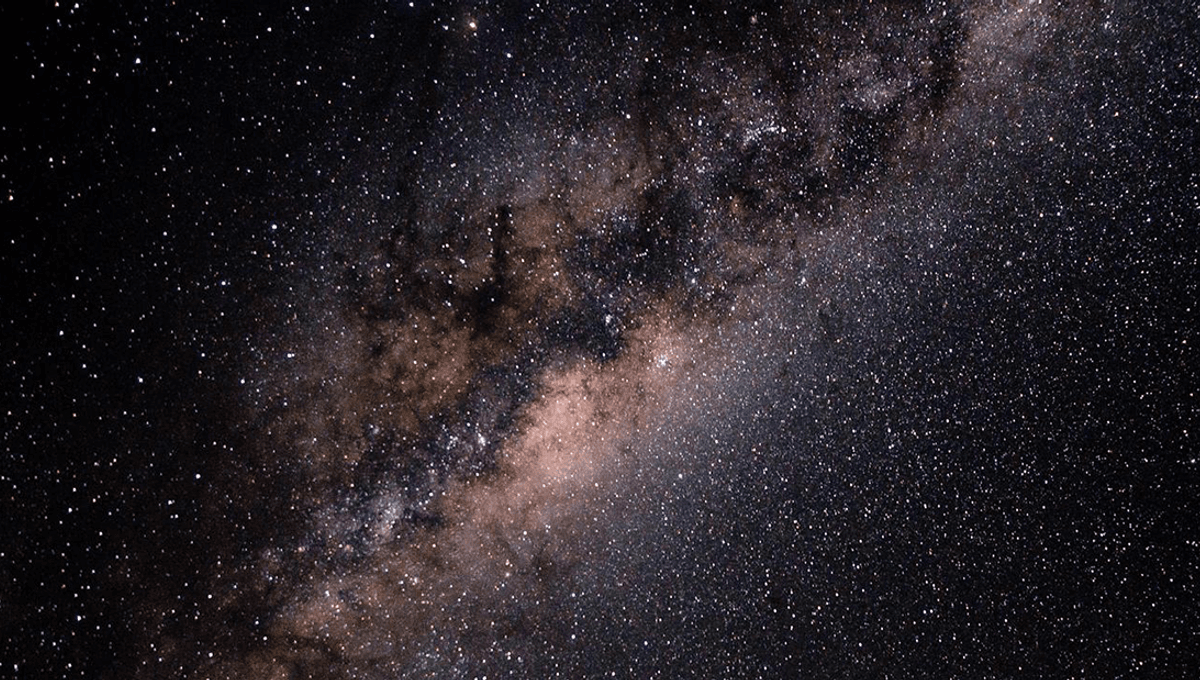With 200 billion trillion (ish) stars in the universe and 13.7 billion years since everything began, you might be wondering where all the alien civilizations are. This is the main question behind Fermi’s paradox, the tension between our suspicions about the potential for life in the universe (given planets found in habitable zones, etc.) and the fact that we’ve only found one planet with an intelligent species inhabiting it.
There are many proposed explanations for the paradox, from a galactic zoo and everyone keeping quiet to avoid being destroyed, to great filters stopping the development of life at various stages. A new paper looked at the paradox from a new angle and concluded that the simplest explanation may be the best; it is possible that we are entirely (or almost entirely) the only intelligent civilization in our galaxy.
The paper begins with a thought experiment proposed by physicist Edwin Jaynes in 1968. Imagine walking into a laboratory and finding a row of large beakers filled with water into which you will place “substance X” to see if it dissolves.
In such a scenario, you would expect the substance to dissolve either almost 100 percent of the time or almost zero percent of the time. This substance either dissolves in water at room temperature or it doesn’t. If it were to dissolve about half the time, that would mean that small variations in temperature and pressure in the lab were enough to change the result, and that the conditions were “fine-tuned” for the substance to dissolve.
We can apply the same kind of reasoning to the hunt for extraterrestrial life and civilizations.
“Consider an ensemble of Earth-like planets across the cosmos—worlds with similar gravity, composition, chemical stocks, and climates,” the team wrote in their paper, which has not yet been peer-reviewed. “Although small differences in space will certainly exist (like the beakers in the laboratory), it should be reasonably expected that life either appears almost all the time under such conditions, or almost never. As before, the appearance of life will appear contrived in approximately half of the cases – again motivated from a fine-tuning perspective.”
We do not have enough information to apply this reasoning to lower levels of life, such as microbial life. It is possible for microbial life to occur in almost every case in which it can occur, or almost never to occur. We just don’t have enough data about planets and exoplanets to know either way, although looking at our own planet we know that multicellular life has only existed for about 600 million years, which might suggest that the jump from single cells to multicellularity life is rare.
The paper’s first author, David Kipping, explains more.
Nor can we use our own existence as evidence that we live in the scenario where intelligent species are abundant. We may just be on one of the very rare worlds where life has arisen.
But we have little information we can use to narrow down the search for advanced extraterrestrial civilizations. Although we looked for potential Dyson spheres and other signs of advanced extraterrestrial civilizations, all of them (where explanations were found) turned out to be natural phenomena, for example, hot dogs.
If we were in a galaxy where intelligent life almost always appears (on large time scales and making reasonable assumptions about longevity), then you would expect to see signs of alien civilizations in it, as the team highlighted using a modified Drake equation. We just don’t see it, which leads us to conclude that we are in a scenario where we are in a galaxy where intelligent life almost never appears, rather than a galaxy where it is abundant.
It’s a pretty bleak conclusion, but the team says there are still possible reasons to be optimistic about a scenario where intelligent life appears infrequently but spreads rapidly when it does, the so-called “predatory alien” scenario .
“Here we can imagine that ETIs appear infrequently, but when they do, they often go on to colonize their region in short order. In such a Universe, most regions are filled and therefore F ≈ 1. The fact that we do not see F ≈ 1 locally is because humanity must necessarily have appeared in a pocket of space where this wave has not yet reached, via the weak anthropic principle ” explains the team.
“Such a scenario lends itself to a reversal of the normal SETI view—instead of looking locally, we have to look at regions highly separated from us. Such a hypothesis has the advantage that it can in principle be verified by extragalactic SETI.”
The paper is being submitted to the arXiv preprint server.



